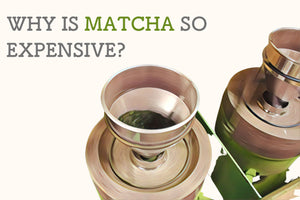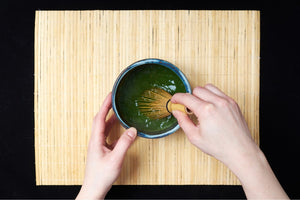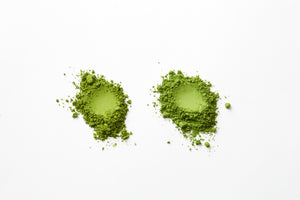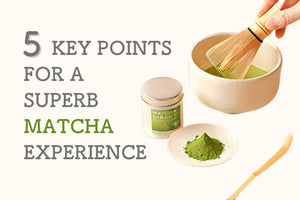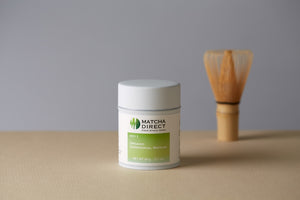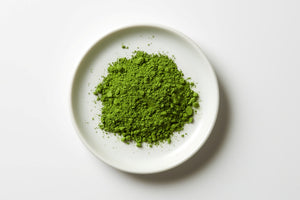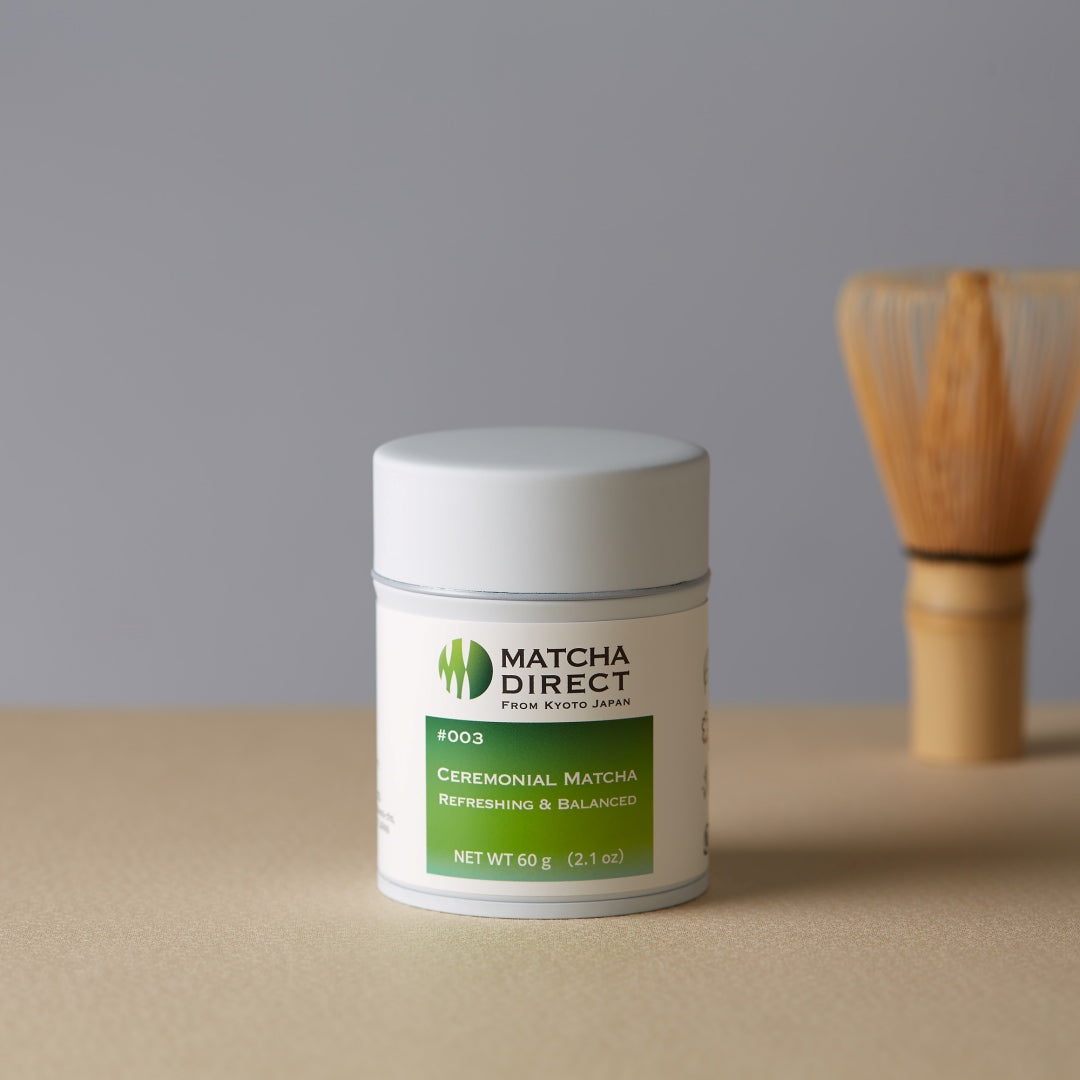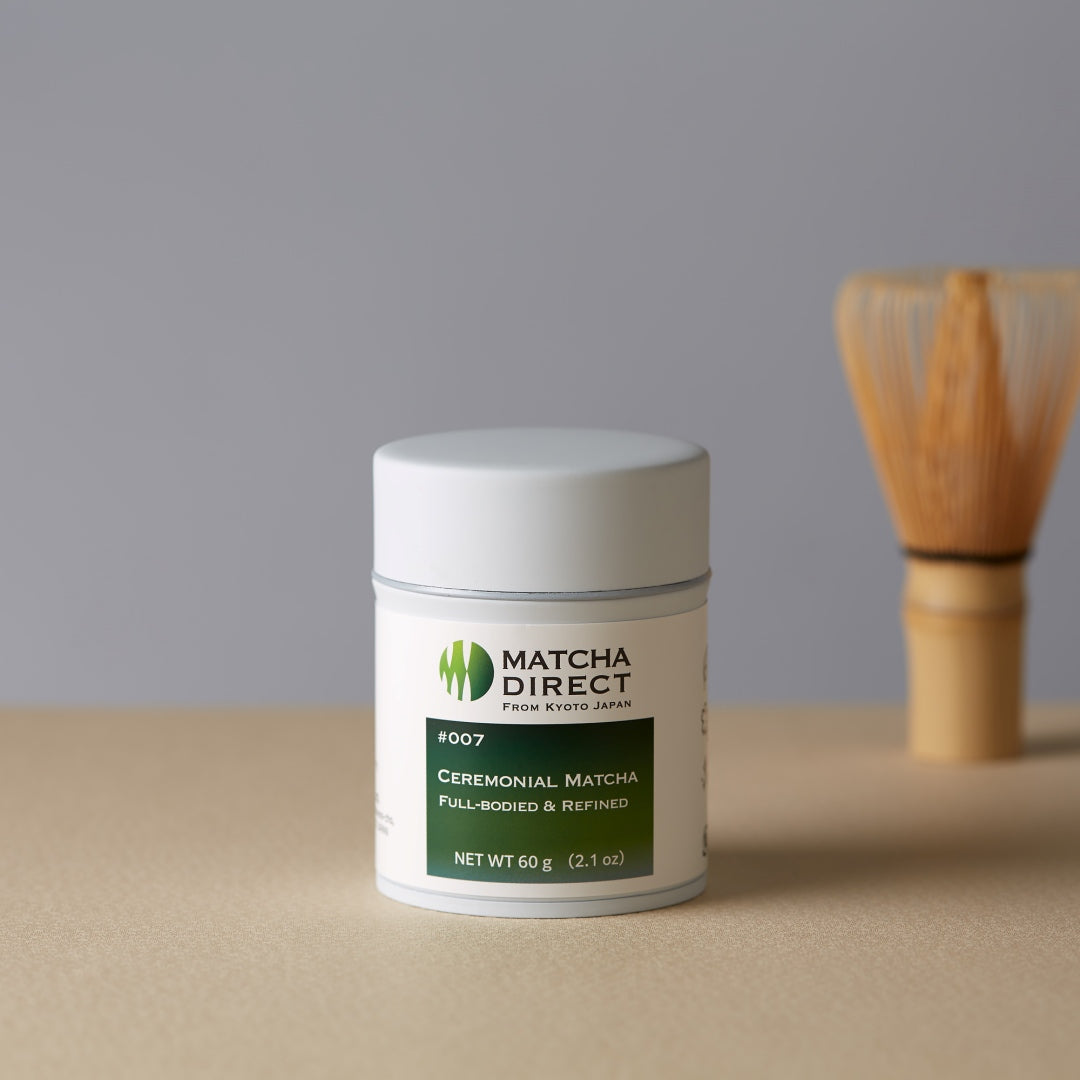What does matcha taste like? Does it taste good?
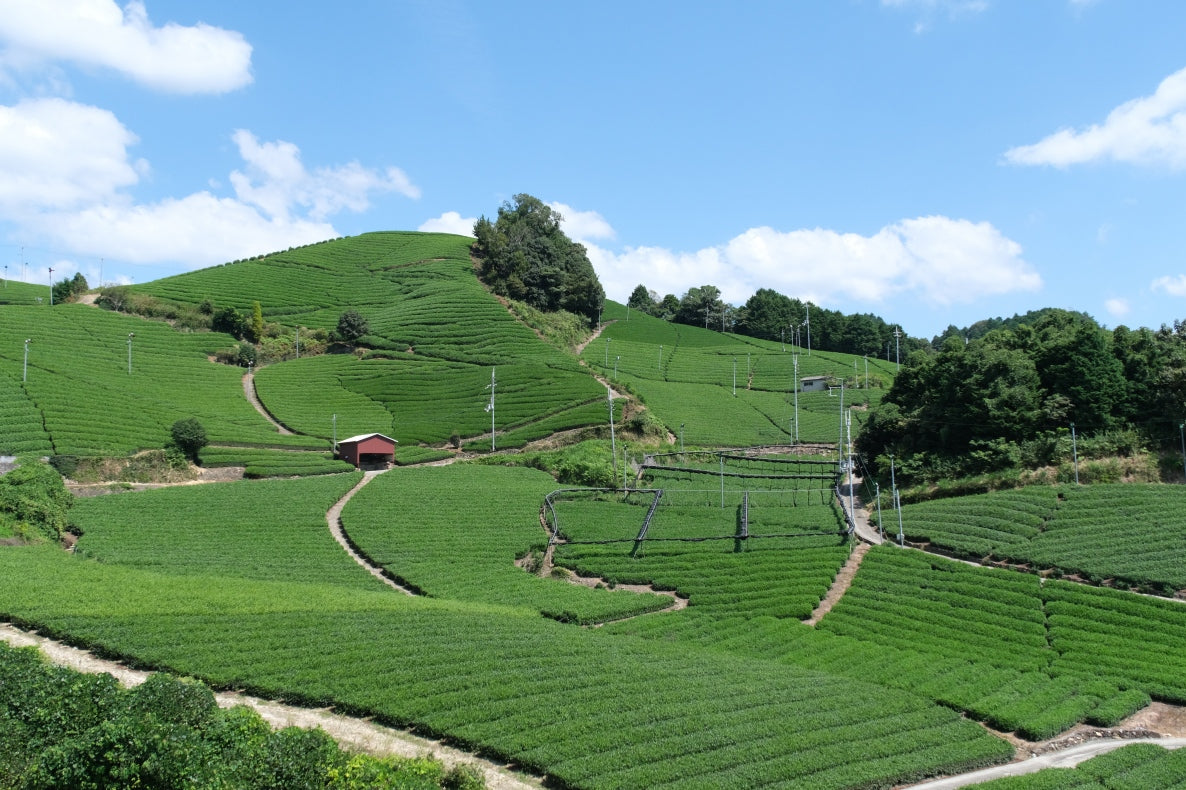
Matcha is a traditional Japanese tea that has gained immense popularity not only in Japan but also worldwide due to its unique flavor and various health benefits.
Matcha is a type of green tea, but it is made using a different method than regular green tea, resulting in a more distinctive taste.
This article will provide a detailed explanation of the taste of matcha for those who have never tried it or are interested in it.
The Taste and Flavor of Matcha
Matcha has a unique taste that sets it apart from other teas.
The first thing you notice when you drink matcha is the "umami" brought about by the amino acids abundant in matcha. Umami is one of the key elements of matcha's deep flavor.
Umami is one of the basic tastes along with sweetness, sourness, saltiness, and bitterness, and it is a taste component discovered by the Japanese. Amino acids such as theanine and glutamic acid in matcha are deeply related to this umami.
Theanine transforms into catechins, which cause bitterness and astringency when the tea leaves are exposed to sunlight. Since matcha tea leaves are grown under shade to avoid sunlight, they contain more theanine and relatively fewer catechins than regular tea.
Therefore, matcha is a tea with strong umami and subdued bitterness.
High-quality matcha has a stronger umami, moderate bitterness, and a mellow sweetness.
This balance of umami, bitterness, and sweetness greatly enhances the appeal of matcha's taste, which has captivated many people for years.
Additionally, matcha has a unique aroma known as "covering aroma" and a fresh, grassy flavor.
Ceremonial Grade Matcha, made from the first-picked tea leaves of the year, tends to exhibit this "covering aroma" prominently.
The grassy flavor of matcha signifies that the natural aroma of matcha is well-preserved.
High-quality matcha also has a very fine powder, resulting in a smooth, creamy texture, allowing you to enjoy the sensation of deep umami and sweetness spreading in your mouth.
Differences in Taste by Matcha Grade
Matcha can be broadly classified into three grades: Ceremonial Grade Matcha, Daily Grade Matcha, and Culinary Grade Matcha. Each grade has slightly different tastes.
These three grades are distinguished by differences in color, texture, and quality.
https://matchadirect.kyoto/blogs/matcha-101/matcha-grades-and-characteristics
Here, we introduce the characteristics and differences in taste of each grade of matcha. Knowing the taste differences by grade can help you choose your preferred matcha.

Ceremonial Grade Matcha
Ceremonial Grade Matcha is the highest grade used in tea ceremonies and is meant to be enjoyed for its pure matcha flavor.
This grade is characterized by its very smooth texture and vibrant green color, offering a natural sweetness and umami with minimal bitterness, resulting in a refined and refreshing taste.
The key elements of this flavor come from using the first-picked tea leaves. This maximizes the rich aroma and taste of matcha.
Ceremonial Grade Matcha is perfect for traditional tea ceremonies but is also recommended for enjoying at home.
Recommended Way to Enjoy: As it is.
It is best enjoyed as it is, without adding anything, to fully appreciate the umami, sweetness, and rich flavor of matcha. Using a tea whisk to prepare it traditionally is also recommended.
Daily Grade Matcha
Daily Grade Matcha is made from second-picked tea leaves or a blend of first and second-picked leaves, unlike Ceremonial Grade Matcha, which uses only the first-picked leaves.
Daily Grade Matcha has a balanced flavor with moderate umami and bitterness. It is simple yet elegant, with a slightly stronger flavor than Ceremonial Grade Matcha.
This grade is versatile, suitable not only for drinking as is but also for matcha lattes, cocktails, and various dishes, making it an excellent option for everyday use. It is also more affordable, making it easier to enjoy matcha daily.
Recommended Way to Enjoy: Matcha Latte
Daily Grade Matcha, with its slightly stronger flavor, is ideal for various drinks and dishes.
Among them, matcha latte is especially recommended, as it balances the bitterness of matcha with the sweetness of milk, making it enjoyable even for those who find plain matcha too strong.
Culinary Grade Matcha
Culinary Grade Matcha is made from second-picked or autumn-picked tea leaves and does not use the highest-quality first-picked leaves.
This grade has a strong taste with prominent bitterness and astringency, making it suitable primarily for cooking and baking rather than drinking on its own.
Recommended Way to Enjoy: Matcha Sweets
Culinary Grade Matcha is best used as an accent in cooking or baking. Matcha ice cream, matcha cakes, and other matcha-flavored sweets highlight its unique flavor and sweetness, making them perfect for desserts.
Tips for Enjoying the Taste of Matcha
So far, we have introduced the taste differences by matcha grade. However, regardless of the grade, there are some points to keep in mind to fully enjoy matcha's unique and attractive flavor.
Here are three tips to maximize the original taste of matcha.
Storage Method
First, let's talk about how to store matcha.
Matcha is sensitive to external influences such as temperature and humidity.
Therefore, if not stored properly, not only its flavor but also its vibrant green color and nutritional value may be compromised.
After opening, use matcha as quickly as possible to maintain its flavor and quality.
If you can't use it all at once, store it in an airtight container to prevent exposure to air and keep it in the refrigerator to minimize the impact of temperature and humidity. This method helps preserve matcha's quality longer.
However, even when stored in the refrigerator, it's best to consume it as soon as possible.
When using matcha stored in the refrigerator, bring it to room temperature before opening to prevent condensation and avoid quality degradation.
Water Temperature
Managing the water temperature when preparing matcha is a crucial element for enjoying a delicious cup.
If the water is too hot, it can ruin the delicate flavor of matcha and bring out too much bitterness.
Therefore, the generally recommended temperature for preparing matcha is around 70-80°C. By adhering to this temperature, you can highlight the balance of UMAMI and sweetness, enjoying the smooth and deep original flavor of matcha.
Proper Amount
The amount of matcha also significantly affects its taste.
The generally recommended amount of matcha is about 2 grams, but this is just a guideline, and you should adjust the amount to suit your personal preference.
Preparing it stronger brings out the rich flavor of matcha, allowing you to enjoy a thick and deep taste. On the other hand, preparing it lighter gives a refreshing and light taste.
Finding your preferred matcha strength is one of the joys of enjoying matcha.
How to Choose Matcha

Finally, let's talk about what to focus on when purchasing matcha.
There are various factors to consider when choosing matcha, but here we will focus on two particularly important aspects: quality and origin.
These factors greatly influence the taste, flavor, and aroma of matcha, so pay attention to them when making your purchase.
Here are specific tips for selecting matcha to help you enjoy its taste to the fullest.
Quality
To choose matcha with rich flavor, quality is extremely important.
From this perspective, Ceremonial Grade Matcha is highly recommended for those who want to fully enjoy the original flavor of matcha. This grade is the highest quality and is used for special occasions such as tea ceremonies and for treating important guests.
When preparing tea with Ceremonial Grade Matcha, it easily creates uniform and beautiful froth, making it visually enjoyable as well.
As previously mentioned, this grade of matcha has a vibrant green color, smooth texture, and extremely fine powder. The unique "covering aroma," characteristic of Ceremonial Grade Matcha, adds even more charm to its flavor.
The "covering aroma" is a unique aroma created by growing the tea leaves under shade before harvest, allowing you to enjoy the rich aroma of high-quality matcha. This aroma enhances the mellowness and UMAMI of matcha, further enhancing the rich taste when drinking matcha.
Origin
The taste of matcha is greatly influenced not only by the type of tea leaves but also by its origin.
In Japan, there are many matcha production areas, but Uji in Kyoto is particularly renowned for producing high-quality matcha.
Uji matcha, cultivated and processed in Uji City and its surrounding areas in Kyoto Prefecture, is known for its deep green color, rich UMAMI, and unique covered aroma.
The history of Uji matcha dates back to the 13th century when it developed by incorporating unique shading cultivation methods into the tea drinking style brought from China. Tea merchants in Uji skillfully blend single-origin tea leaves to create high-quality matcha with balanced color, UMAMI, and aroma.
Uji matcha is highly valued as premium tea used in tea ceremonies, and tea leaves gathered from major production areas in Kyoto Prefecture are processed in Uji and widely known as the regional brand "Uji matcha."
Uji matcha is also used in sweets and ice cream, further strengthening its brand power due to its wide range of uses.
High-Quality Ceremonial Grade Matcha from "MATCHA DIRECT"
MATCHA DIRECT, operated by a long-established tea shop with over 160 years of history in Kyoto, offers high-quality Ceremonial Grade Matcha processed in Uji, Kyoto.
MATCHA DIRECT's matcha is freshly ground and delivered upon order, allowing you to enjoy fresh matcha with minimal off-flavors.
Experience the balanced flavor and the refined bitterness that captures the essence of matcha, created from the finest first flush tea leaves.
https://matchadirect.kyoto/products/ceremonial-grade-matcha
Conclusion
The taste of matcha continues to captivate many people with its deep UMAMI, delicate and refined bitterness, and mellow sweetness in perfect balance.
Its quality and origin are major factors in producing the rich flavor of matcha, each contributing to its unique character.
Additionally, the various grades of matcha offer different flavor experiences worth noting.
Please explore the diverse types of matcha and their various ways of enjoyment to experience the profound taste of matcha.

